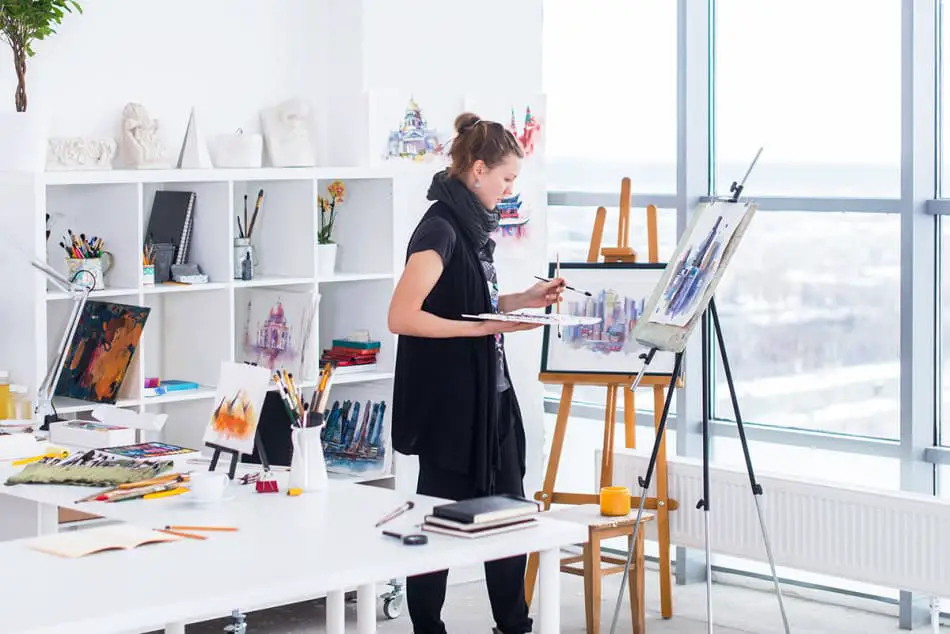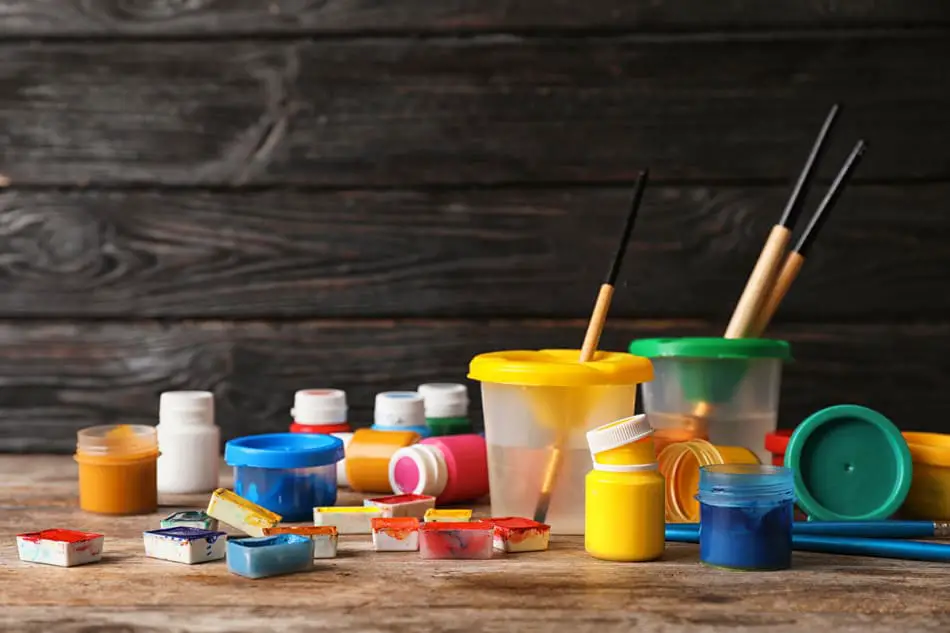For generations, creative young people have been faced with a difficult choice when they reach the end of their mandatory schooling. They need to choose whether to pursue their creative talents through a traditional learning structure or to strike out on their own, trusting their own creativity and ability. In order to choose, it’s important to understand the differences between art school and self-teaching.
Art school has a structured environment where students can master the fundamentals, but it is expensive, and there’s no guarantee of a career. Self-taught artists face a different struggle, as they enjoy complete artistic freedom but must compete with a talent pool.
There are many factors that make up the pros and cons of attending art school versus the self-taught approach. Keep reading to learn why art school is the right choice for some creative students and why others are better off figuring it out for themselves.
Art School Courses
To earn a Bachelor of Fine Arts degree, students must complete a set of art theory, history, and technique courses with passing grades. Similar to most universities, most art programs require four years to complete, according to National University.
Do You Have To Take General Ed Classes at Art School?
One of the major factors that draw many young artists towards a self-taught and self-actualized career is a desire to avoid General Education classes that have little to no bearing on their career path.
The value of these courses in college is debatable, and many artistic students may feel that it’s a waste of time, energy, and tuition money.
You have to take general ed classes at art school. However, it’s typically a lighter load than traditional universities. Art school general education coursework will ensure that art students have at least a basic understanding of science and mathematics.

If you’re looking to get out of doing math problems during your college years, good luck.
The only way to get out of doing general education courses is to forgo the higher education classes as well by becoming a self-taught artist. Even at art school, according to Hussian College, you will be required to learn general science and mathematics.
Pros and Cons of Art School
Art school can be an exciting and eye-opening environment for many students, as well as a heavy workload and economic obligation. If you work well in a classroom environment, art school can open the door to a wide variety of new art styles and opportunities.
The organized structure of art school, however, tends to shape originality into creative conformity, according to ImproveDrawing.
Pros of Attending Art School
If you want to attend art school, let’s take a look at some of the benefits you will receive.
Structure
For some types of students, the classroom is a perfect learning environment.
A traditional art class structure can help artists to master techniques. If you’re starting from the very beginning of art theory and technique, a structured learning environment can be the most conducive to the growth of your understanding and ability.
Exposure
One of the major upsides of attending art school is the massive bank of knowledge held by the professors. Taking art classes will expose students to new artists, styles, and ideas, which is critical to inspired creative growth.
And, once you’re in school, you’ll be able to get fresh perspectives and get different ideas than you would otherwise have.
Experience
The college experience is an important motivating factor for many students when choosing their path after graduating high school.
Whether it’s art school, trade school, or an Ivy League university, every school provides a new social microcosm to explore and learn from. The experience of being surrounded by similarly artistic and creative minds is a powerful draw for many.
Networking
Networking is critically important to any career, artistic or otherwise.
Attending art school socializes artists with their contemporaries, providing avenues for collaboration and self-promotion. Art students are sometimes also granted opportunities to utilize the pre-established network of the university and professors.
Logistics of the Art Industry
There are a variety of skills and systems which are helpful to artists, such as proper framing and mounting of finished pieces, as well as how to navigate the world of art exhibition and sales. Learning these skills, along with both the micro-and macro-economics that goes with them, can be helpful in guiding creatives into a more disciplined and structured artistic career.
A Degree
In the job market, the presence of a bachelor’s degree on your CV or resume can be the make-or-breaking factor. Some employers refuse to open job opportunities to those without degrees, regardless of their experience level.
This is less applicable to artists, as a portfolio is often more influential than a degree or resume. However, a bachelor’s degree may help if you wish to expand your career across fields into the non-creative sector.
Cultivate Your Artistic Language
Having a disciplined means of self-expression is highly beneficial to mental health and well-being.
Attending art school can help students to channel their efforts into a productive means of self-expression by introducing and strengthening the naturally expressive abilities naturally present in the student.
Cons of Attending Art School
However, if you’re on the fence about going to art school, and you feel that you’re better off teaching yourself the skills you need, keep reading to confirm what you already might know.
Tuition
Tuition prices are high for universities across the world, artistic and otherwise. According to Campus Explorer, the average net cost of art school is roughly $42,000, nearly double the tuition of some state universities.
The high price of tuition forces many to take out loans, which are then difficult to complete payments on if the resulting artistic career gets off to a slow start.
Stylistic Conformity
One of the major downsides, according to art students via artpromotivate.com, is the artistic conformity imposed upon the students by the coursework and professors. Artists tend to put a high value on their own creative originality, which can make it difficult to take instruction.
It’s important to remember, however, that the function of art school is to teach techniques, which artists can then apply to their own preference outside of the classroom setting.
Inconsistent or Poor Teachers
Wherever you go to school, there will be some teachers you connect with and some you don’t.
Art students from varying sources attest that some professors are simply bad teachers, jealously picking favorites among their students or ineffectively passing on the technical knowledge required to master a new or foreign art style.
Re-Starting Your Artistic Journey From the Basics
If you’ve spent a lot of time honing your craft before heading off to art school, you may find it frustrating to start over from the beginning. Art schools are in the practice of starting their students with the fundamentals, which typically includes drawing 101 or the preliminary basics of any artistic medium.
Unstable Job Market Following Graduation
As with any degree, completion doesn’t guarantee a smooth career path. Artists have a particularly competitive job market, as a large pool of talent competes for a few highly desirable positions.
Pros and Cons of Being a Self-Taught Artist
Teaching yourself to be an artist can be challenging, but it can also be tremendously fulfilling.

Self-taught artists, in some ways, make things harder for themselves by taking on the burden of expanding their own creative and perceptual horizons. In an art school setting, this responsibility should fall on the professors.
The upside of a self-taught artistic career can be found in the creative freedom and real-world experience that artists gain along the way. While self-taught artists may not acquire the same depth of knowledge in artistic theory or history, they are free to follow or break artistic rules and norms as part of their creative process.
Pros of Being a Self-Taught Artist
If you already have the art skills, then these pros should be very familiar to you.
Originality and Artistic Freedom
Art classes are designed to instruct students in their method of creative expression.
As any inspired artist knows, the means of expressing an idea is itself an essential element of that idea. Many artists flourish in the lack of rules and structure that accompany a self-taught artistic career.
Organic Networking
A large part of a self-taught artistic career is expanding your horizons by visiting art shows. By presenting yourself to the artistic scene as a viewer, you will naturally form connections with other creatives, organically establishing an artistic network.
This can help new self-taught artists to establish possible buyers and clients.
Real-World Experience
The advantage of a self-taught artistic career is that it essentially throws the artist into the deep end right away. While this can seem overwhelming at first, many artists find that simply putting themselves and their work out into the public eye can help to improve their craft and expand their resumes.
Having real-world experience in an artistic pursuit may be more desirable to some employers than a four-year theoretical art degree.
General Migration Away From Traditional Art School
Fewer artists are choosing to attend art school following high school graduation, according to data from the Guardian. This means that a significant number of artists are finding that their artistic careers are doing fine without art school.
As more of the population migrate away from traditional artistic schooling, it’s likely that employers will reactively be more open to artistic applicants without degrees.
Cons of Being a Self-Taught Artist
When you’re a self-taught artist, you have some struggles. Let’s look at some of the more common struggles that many self-taught artists face.
Cost of Supplies
Art supplies can be expensive, especially if the artist wants to use high-quality materials for their project. While this is true for art students as well, self-taught artists do not have the option of using materials or equipment provided or funded by a university.

Art students typically spend between $70-$200 on art supplies, according to Red and Black.
Limited Exhibition Opportunities
One of the hardest parts about a self-taught artistic career is forging your own path towards exhibition and recognition.
Without the advantage of university art shows and professors’ artistic connections, self-taught artists must beg, borrow, and…well, hopefully not steal, in order to get their work displayed or sold in public.
Many artists will partner with local restaurants or cafes as a means of exposing the public to their work and name.
No Degree to Prove Your Learning
Without a diploma, self-taught artists are already out of the running for some jobs. Although a self-taught artist may study the exact same theories, techniques, and historical examples, they will not receive official credit for that learning.
The knowledge that self-taught artists gain through their study must be reflected in the work they produce, rather than the title printed on their diploma.
Consider Taking Art Classes as a Collegiate Elective
According to Agora Gallery, the best time for art instruction and learning is immediately after graduation from high school, while the responsibilities of adulthood are still relatively removed from the student.

Even if you don’t pursue your creative talent via the traditional art-school method, take advantage of the freedom that comes after graduation to improve your creative abilities.
Students can continue to improve their artistic abilities in a traditional academic or hobbyist fashion by taking elective art classes at their university. If you’re not transferring from high school into a university, you can still grow your artistic abilities by taking elective art courses at the local community college or recreation center.
Requirements To Get Into Art School
Like any institution of higher learning, you can’t just walk right in. The application process for art school will vary depending on the reputation and intensity of the university, as well as a few other factors.
A high school diploma, some inherent artistic ability, and letters of recommendation are all essential when applying to art school. References from art teachers, community leaders, and local art institutions can be helpful, along with a full and diverse portfolio representing the crème of your creative talent.
Beyond references and artistic talent, the last thing you need to attend art school is money, and lot’s of it.
Similar to other colleges, many art schools offer scholarship programs to extra gifted or uniquely needful students. With the exception of the Cooper Union for the Advancement of Science and Art, however, it’s rare for art schools to provide students with full-ride scholarships.
Final Thoughts
Art school is a great learning opportunity for some students, but it can be a creativity-squelching structure for others.
There are pros and cons accompanying either career path an artist chooses, either to study in a traditional setting or learn by experience through trial and error in their own art and career. The best option depends on the student, how they learn, and what they hope to achieve with their art.






